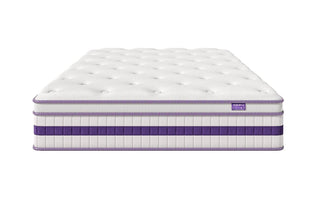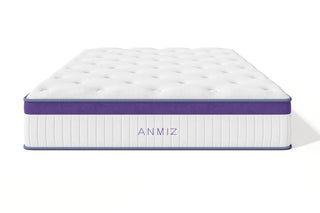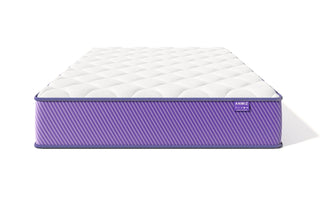Best Mattress for Combination Sleepers
We receive free products to review and participate in affiliate programs, where we are compensated for items purchased through links from our site. See our disclosure page for more information.
Finding the right mattress for combination sleepers can be tricky, as they often change sleeping positions multiple times during the night. For instance, the firmness level suitable for side sleepers may not offer the best support for stomach sleepers.
To help, we’ve compiled a list of mattresses that work well for people who switch between back, side, and stomach sleeping — sometimes all in one night. We've also tested each mattress for responsiveness, meaning how easily you can move around on it. After evaluating over 500 mattresses in our Austin, TX mattress lab, we’ve narrowed it down to a select few that are ideal for combination sleepers. Among these, these ten stood out as the best for those who like to switch positions.
Our Verdict: What’s the Best Mattress for Combination Sleepers?
Our expert reviewers selected the Helix Midnight Luxe as the top mattress for combination sleepers, thanks to its balanced performance in the mattress lab. It provides a perfect mix of comfort and support for all sleep positions. Additionally, its responsiveness ensures easy movement throughout the night.
The Best Mattresses for Combination Sleepers
- Helix Mattress – Best Overall
- Nectar Mattress – Most Comfortable Mattress for Combination Sleepers
- WinkBeds Mattress – Best Luxury Mattress for Combination Sleepers
- Bear Mattress – Best Cooling Mattress for Combination Sleepers
- Nolah MattressBest Hybrid Mattress for Combination Sleepers
- Brooklyn Bedding Mattress Best Cheap Mattress for Combination Sleepers
- Saatva Mattress – Best Innerspring Mattress for Combination Sleepers
- Birch Mattress – Best Organic Mattress for Combination Sleepers
- Titan Mattress – Best Mattress for Heavy Combination Sleepers
Compare the Best Mattresses for Combination Sleepers
What Matters When Choosing a Mattress for Combo Sleepers
Our Chief Medical Advisor, Dr. Raj Dasgupta, MD, FACP, FCCP, FAASM, explained, “Body type, sleep position, and personal preferences all influence the best mattress choice for you.” Since combination sleepers frequently change positions throughout the night, they need a versatile mattress that offers support, pressure relief, and balanced weight distribution in various positions.
To identify the most versatile mattresses for combination sleepers, we put each one through a comprehensive testing process, developed in collaboration with mattress experts, certified sleep science coaches, and medical advisors. We specifically focused on how well each mattress performed in the following categories:
- Pressure Relief: Combination sleepers require a mattress that alleviates pressure in all positions. To assess this, testers of various weight classes lie on their backs, sides, and stomachs while reporting any pressure they experience. Additionally, we use a thermal mat to capture color-coded images showing areas of pressure buildup. If a mattress performs well in pressure relief as testers move through different positions, it’s a strong candidate for combination sleepers.
- Responsiveness: A responsive mattress is essential for sleepers who shift positions frequently. It should quickly return to its original shape after weight is applied, allowing easy movement without feeling stuck in slow-moving foam. We evaluate responsiveness by having testers change positions and noting how easily they can do so. We also test this by placing a heavy kettlebell on the bed for seven seconds, then abruptly removing it and timing how long it takes for the mattress to bounce back to its original form.
- Motion Isolation: While motion isolation is less of a concern for solo sleepers, it matters for combination sleepers who share their bed. We test how much movement from repositioning can disturb a partner’s sleep. One tester lies still on one side of the bed, while the other moves through different positions. The stationary tester records how often they feel these movements. Additionally, we test motion isolation by placing a glass of water on one side of the bed and observing how much the water splashes as a tester moves around.
Best Mattresses for Combination Sleepers
Best Overall – Helix Mattress

Most Comfortable Mattress for Combination Sleepers – Nectar Mattress

Best Luxury Mattress for Combination Sleepers – WinkBed Plus

Best Cooling Mattress for Combination Sleepers – Bear Mattress
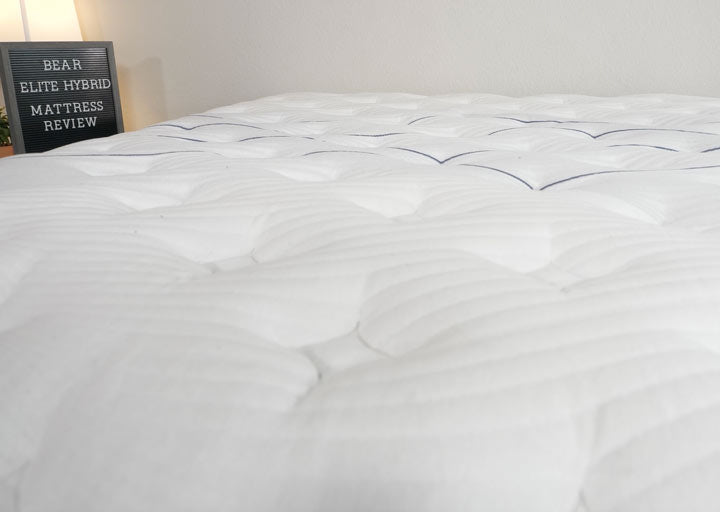
Best Hybrid Mattress for Combination Sleepers – Nolah Mattress

Best Affordable Mattress for Combination Sleepers – Brooklyn Bedding Mattress

Brooklyn Bedding Mattress
Best Innerspring Mattress for Combination Sleepers – Saatva Classic
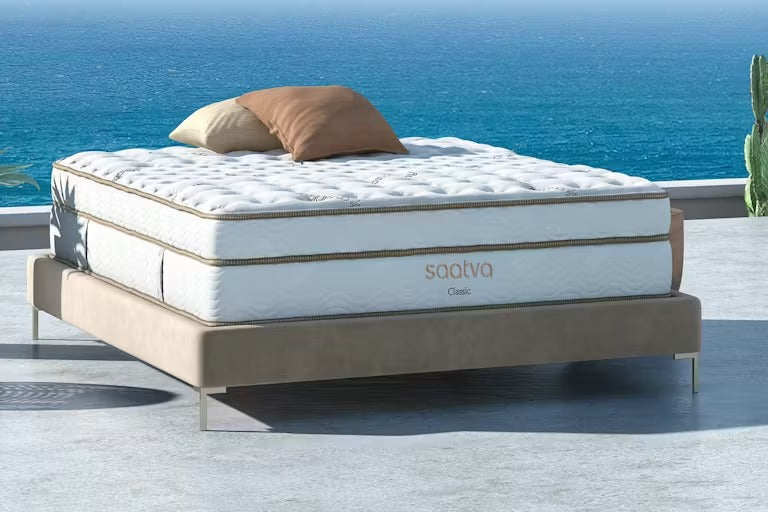
Best Hybrid Mattress – DreamCloud Mattress

Best Organic Mattress for Combination Sleepers – Birch Mattress
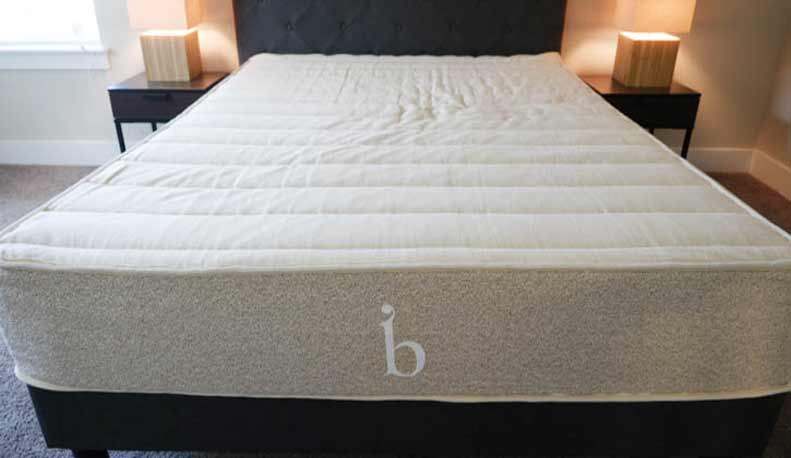
Best Mattress for Heavy Combination Sleepers – Titan Mattress

Considerations When Buying a Mattress for Combination Sleeping
There isn’t a one-size-fits-all mattress, but by considering the following criteria, individuals can find the mattress that best suits their needs.
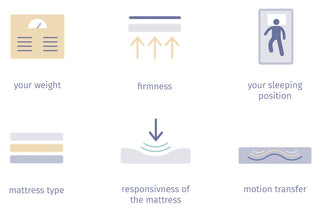
Weight and Size
A person’s weight plays a significant role in how deeply they sink into a mattress and how much support they need. It also influences the mattress's overall feel. "A mattress will feel firmer to a lighter person than it will to someone heavier," explained Dr. Dasgupta.
For lighter individuals, a medium-firm memory foam mattress can be a good fit for various sleeping positions. However, heavier individuals may need a more supportive hybrid or innerspring mattress with a softer top layer. Combination sleepers should focus on finding the right balance between comfort and support.
Firmness
Soft mattresses are typically ideal for side sleepers, while medium-firm mattresses work best for back sleepers, and firmer mattresses are often a better fit for stomach sleepers. For combination sleepers, who switch between two or more positions, a medium-firm mattress is recommended. This ensures the mattress is soft enough for side sleeping while providing enough support for back and stomach sleeping.

Additionally, regardless of the mattress, it’s always beneficial to place a pillow between your knees when side sleeping.
Sleeping Positions
For combination sleepers, it's important to consider the positions they switch between. If someone sleeps on their side and back, they’ll likely want a mattress that offers both pressure relief and support.
For those who sleep on their back and stomach, a mattress that’s supportive but a bit firmer is probably the best option.
If someone switches between all three positions during the night, they may need to explore a few options to find the perfect balance of comfort and support. “Maintaining the spine’s natural curve is essential, even if you switch between positions,” advised Dr. Dasgupta.
Mattress Type
There are several mattress types that suit combination sleepers. Hybrid and innerspring mattresses offer support through coils while providing comfort and pressure relief with a pillow top or foam layers. Dr. Dasgupta favors hybrid mattresses, describing them as “a superhero of sleep comfort” because they blend the responsiveness and support of coils with the cozy feel of foam.
For combo sleepers interested in an all-foam mattress, they should look for one with zoned construction or a thinner comfort layer. You don’t want to sink too deeply into the mattress when switching to your back or stomach, as that could indicate insufficient support.
Responsiveness
Combination sleepers typically prefer a mattress that responds quickly when they change positions. If they opt for a slow-moving memory foam mattress, it may take time for the mattress to conform to their body shape.
However, a bouncier mattress with responsive foam or latex in the comfort layer allows sleepers to move freely without feeling stuck or uncomfortable. That said, preferences can vary. Some combination sleepers may prioritize the plush feel of memory foam over responsiveness, in which case an all-foam bed might be the better choice.
Motion Transfer
When choosing the best mattress for couples, it's crucial to consider how the mattress handles motion transfer. If one or both partners are combination sleepers, it’s important to determine whether their movements will disturb each other or if the mattress will absorb the motion. Memory foam mattresses typically perform best in terms of motion isolation.
However, memory foam isn’t always ideal for combination sleepers. It's important to find a mattress that reduces motion transfer while also addressing the specific needs of combination sleepers, such as responsiveness and support.



